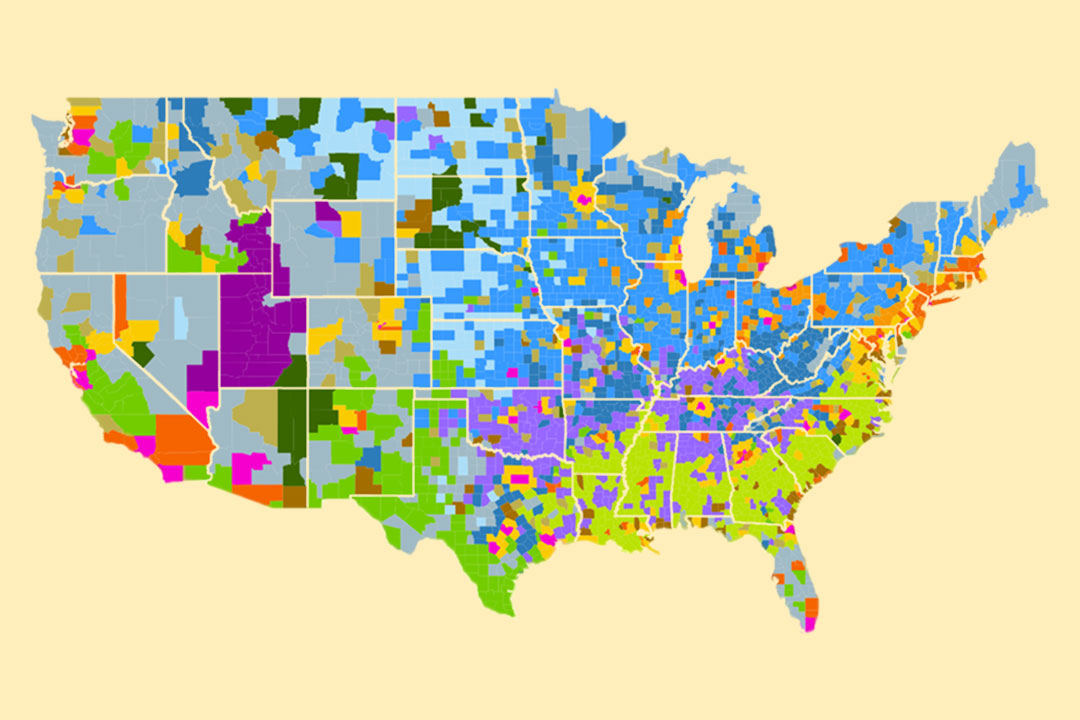A $699,600 grant from the Robert Wood Johnson Foundation will support new research by the American Communities Project to explore the relationship between public health and media, socioeconomics and culture at a local level.
Housed at the George Washington University’s School of Media and Public Affairs, the American Communities Project works to map and analyze the social, political and cultural fault lines that shape the United States and tell the stories of local leaders and community members across the country.
The Robert Wood Johnson Foundation grant will help expand this work with a focus on health, income equity and the divides between urban and rural America.
This new effort will mine data sets on health, economics, media consumption and culture to find the common challenges facing different communities. Researchers will use the American Community Project’s 15 community types to analyze these relations.
American Communities Project director Dante Chinni and Stanford University researcher Iris Hui developed the 15 county types by analyzing key demographic variables, from race to ethnicity and occupation, in each U.S. county.
The analysis will help provide insights into how different communities experience their worlds within the political and cultural media bubbles that currently define the nation.
“Our research will help community leaders and policymakers develop policies and programs that can improve lives,” said award-winning journalist Dante Chinni. “We want to understand and explain the different realities various American communities live in, why they live in them and what those communities can learn from each other.”
Chinni and his team will also chronicle the on-the-ground look and feel of the nation’s small towns and big cities.
“It’s important to us to tell the stories of these places by bringing in the voices of the people that comprise them,” he said.
The grant project will produce four reports that explore the nation’s community-level similarities and differences. Each report will focus on a different topic area’s relation to health and equity.
The first report is planned for fall 2018, and the School of Media and Public Affairs will also host events and lectures around each report’s release.
“This is research that will help people and policymakers burst the bubbles that currently define the nation,” said School of Media and Public Affairs director Frank Sesno.
A small advisory group of researchers, community health experts and journalists will help steer the project’s topic agenda and provide guidance and feedback.
The project will work with data from the County Health Rankings & Roadmaps, a Robert Wood Johnson Foundation program at the University of Wisconsin’s Population Health Institute. The American Community Project will also analyze county-level data from the Census Bureau, Gallup and Simmons Research.


